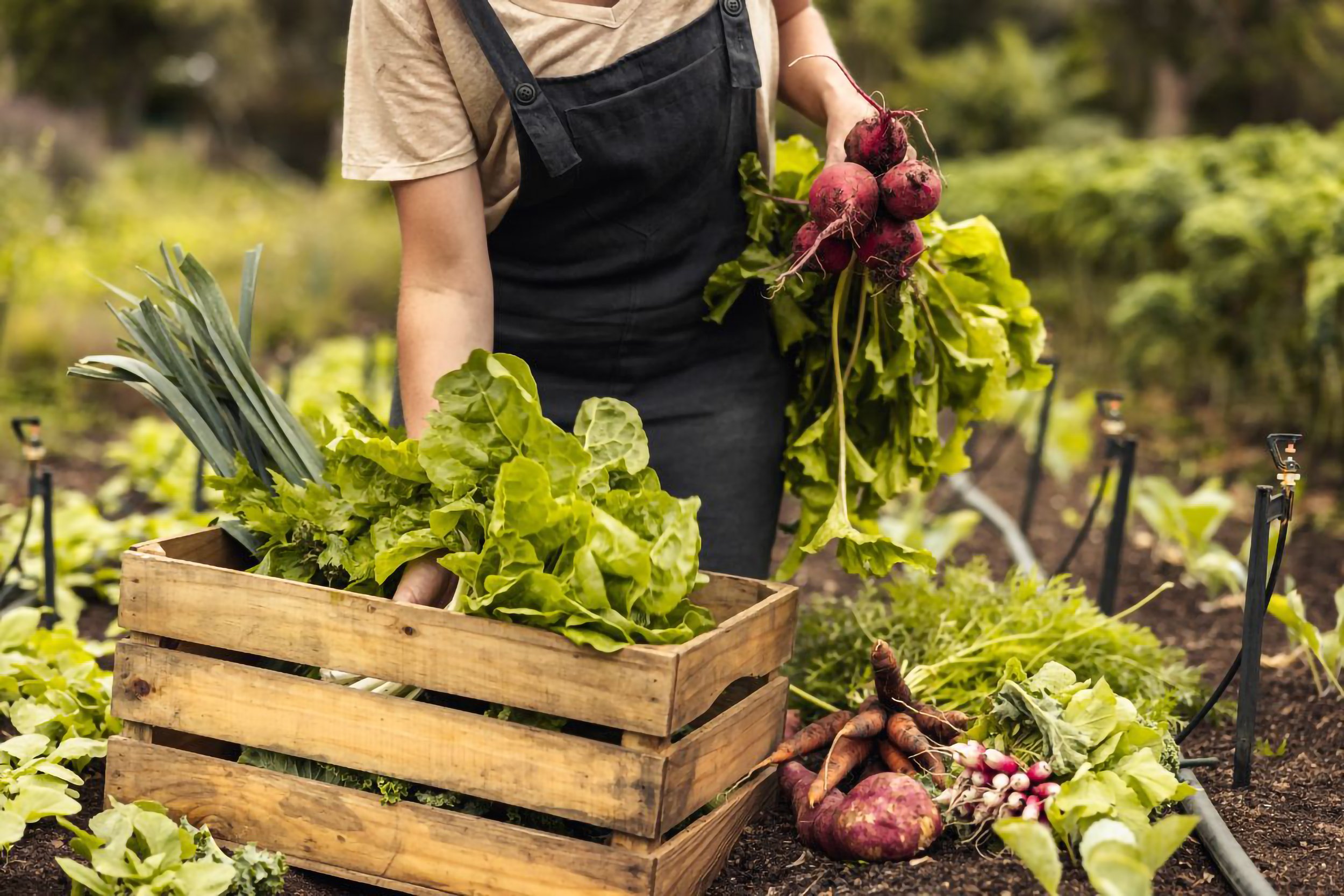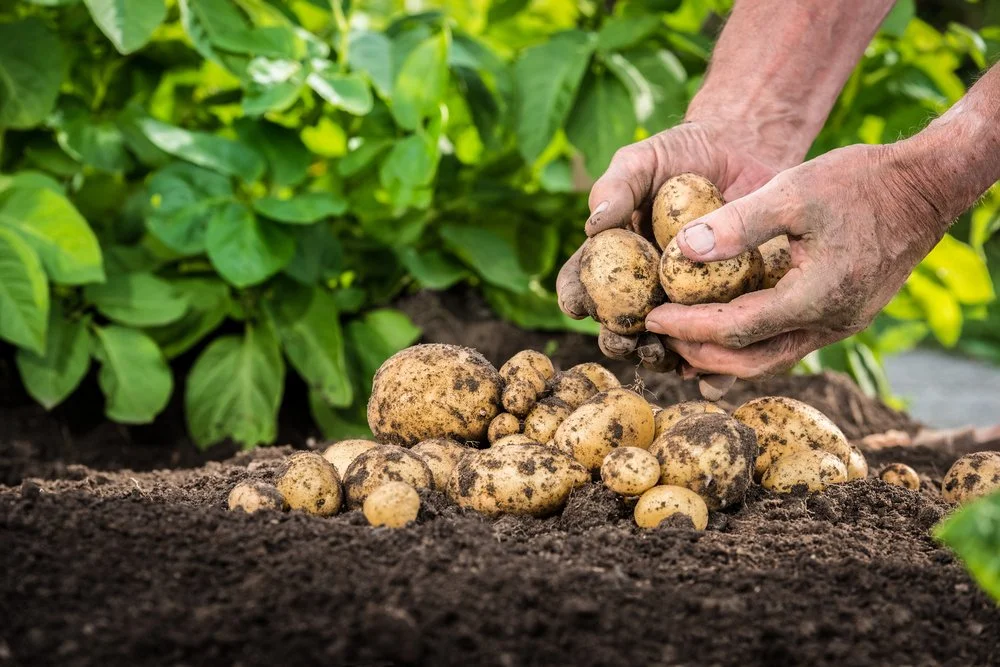Self Sufficient Gardening
Discover > Self Sufficiency > Self Sufficient Gardening
As more people are becoming conscious about the effects of their activities on the environment, there has been an increase in the popularity of gardening. From balcony gardens to backyard ones, people are becoming more interested in growing their own fruits and vegetables. An even more exciting trend is self-sufficient gardening where people grow most or all of their food themselves.
In this post, we'll look at what self-sufficient gardening is, what you need to get started, and tips on how to maintain your self-sufficient garden.
What is Self-Sufficient Gardening?
In a nutshell, self-sufficient gardening refers to growing your own food without relying on grocery stores for essentials.
Ideally, you should have enough land (or space) to grow crops all year round to ensure food security. This way, you know exactly what's in your food, you're reducing the carbon footprint by eliminating the need for transportation of produce, and you're engaging in a fun and rewarding hobby.
What Do You Need to Get Started?
One of the most important things you'll need is space or land to grow your crops. Self-sufficient gardens can range from small patio gardens, backyard spaces to larger homesteads. You'll also need to consider the seasons, as you'll have to grow enough food to last through winter. You'll additionally need tools such as shovels, hoes, and rakes to prepare the soil.
Water is crucial for any garden, and you'll need a reliable source of water for watering. Lastly, you'll need to decide on the crops to grow and, most importantly, ensure they thrive using natural and sustainable farming techniques.
Maintaining Your Self-Sufficient Garden
Once you're set-up, it's crucial to maintain your garden to ensure maximum yield. One of the most critical things is watering. Regular watering is essential in ensuring your crops remain healthy and grow without stress. Ensure you mulch your garden beds to prevent water loss and help save you time and energy.
Pests and diseases are another key factor in preventing maximum yield. Consider using companion planting methods to deter pests or opt for organic pesticides. Crop rotation, planting in succession, and cover cropping help keep the soil healthy and prevent soil-borne diseases.
Other Factors to Consider
If you're a beginner, it's essential to do research before setting up a garden. You'll need to consider the climatic conditions of your area, what crops grow best and thrive in your space, and how to maintain soil health.
Be cognizant of your energy budget and work within your limits to avoid burnout. Lastly, be patient; gardening is a process that takes time, and there'll be challenges along the way.
Tips for a Self Sufficient Garden
Choosing the Right Vegetables and Herbs
Choosing the right vegetables and herbs is crucial in self-sufficient gardening. You want to make sure you're growing vegetables that you love and can make use of in your cooking. Before planting, consider your location, climate, and soil type, and choose plants accordingly. For instance, if you live in a sunny area with dry soil, consider growing drought-resistant plants, such as tomatoes, peppers, and squash. If you're new to gardening, consider starting with easy-to-grow veggies like lettuce, radishes, and herbs.
Pest Management
Pests can quickly reduce the yield of your garden, so it's important to have effective pest management techniques. Instead of using chemical pesticides, use natural pest control methods such as companion planting, rotating crops, and introducing good insects to your garden. Ladybugs, for example, love to eat aphids, so introducing them into your garden will help reduce the numbers of aphids that could damage your plants.
Save Seeds
Saving seeds (how long do seeds last?) is a great way to ensure your garden is self-sufficient. By doing this you can start growing new plants year after year, as opposed to buying new plants every year. Saving seeds from your plants is quite easy and can save you money in the long run. Be sure to store them correctly in a cool and dry place to ensure they stay viable for future use.
Compost
Composting is a great way to produce your own organic soil, which can help your plants grow stronger and healthier. Crop waste, food scraps, and leaves are all great items to include in your compost pile. When you have produced compost, you can add it to your garden beds and help to fertilize your plants organically.
Water Management
One of the benefits of a self-sufficient garden is that you don't have to worry about watering it constantly. There are many ways to reduce water usage, such as collecting rainwater, using drip irrigation, mulching, and planting drought-tolerant plants.
Mulching around plants helps reduce evaporation and keeps the moisture locked in the soil. Drought-tolerant plants such as succulents can help reduce water usage and thrive in arid climates.
Preserving Your Harvest
Once you've grown your own vegetables, fruits, and herbs, you want to make sure you can enjoy them year-round. You can do this by preserving your harvest using various methods like canning, freezing, and dehydrating.
Canning involves heating jars of food to kill bacteria and preserve the food's freshness. Freezing involves freezing vegetables in airtight bags for later use, while dehydrating involves removing the moisture from fruits and vegetables using a dehydrator or an oven.
Self Sufficient Garden Ideas
Raised Bed Gardening - For those looking to create a self-sustaining garden, raised bed gardening is an excellent way to start.
Raised beds are easier to maintain as they don't require tilling, can be constructed from recycled materials and can produce higher yields of fresh vegetables in a smaller space. You can either opt for traditional beds or find kits that can help you set up a garden bed in a few easy steps.
Patio Gardening - In case you have a small balcony or patio, you can still grow your food. Container gardening is a popular way of growing herbs, small vegetables, and fruits in limited space.
You can use old buckets, tubs, or any pots to create your garden. Be sure to choose the right soil, feed, and water for maximum production.
Aquaponics and Hydroponics - Aquaponics is a combination of aquaculture and hydroponics. The system consists of growing plants in a medium while the roots are submerged in water that contains fish waste. The plants consume the nutrients while their roots purify the water, which in turn nourishes the fish.
Hydroponics is the practice of growing plants by suspending them in nutrient-rich water instead of soil. Both hydroponics and aquaponics allow you to grow crops vertically and in controlled conditions, producing fresh produce throughout the year.
Great Crops for a Self Sufficient Garden
Potatoes - Potatoes are an excellent crop for self-sufficient gardening. They are easy to grow and can be used in a variety of dishes. To grow potatoes, simply plant ‘seed potatoes’ and keep the soil moist. They can be harvested after the foliage dies back. Potatoes can be stored for several months, which makes them an excellent crop to have on hand.
Tomatoes - Tomatoes are a versatile crop that can be used in salads, sandwiches, sauces, and soups. These are easy to grow and with the right climate and temperatures, you can grow them all year round. Container-grown tomato plants can thrive on balconies or patio gardens and require minimal space because you can grow as many as you want. Moreover, cherry tomatoes grow small and are great for salads and sandwiches.
Kale - Kale, an excellent green crop, is becoming increasingly trendy. It’s high in vitamins, minerals, and antioxidants, and it’s one of the easiest crops to grow. You can start kale from seedlings or seeds and it can grow year-round in most climates.
Green Beans - Green beans are another easy crop for a self-sufficient garden. They require very little maintenance and can be harvested once a week during the season. They grow best in warm weather and require plenty of water and sunlight.
Lettuce - Lettuce is easy to grow and can be used in salads, sandwiches, and tacos. It is also very adaptable and can grow in just about any temperature. Lettuce is also one of the fastest-growing crops and can be harvested within just a few weeks of planting.
Zucchini - Zucchini is a prolific produce once it starts fruiting, so it’s great to have in your self-sufficient garden. It is also very versatile in terms of cooking options. You can use it in desserts, bread, pasta (how long does pasta last?), and casseroles, to name just a few. Zucchini requires moderate sunlight, water, and compost to thrive.
Carrots - Carrots are a perfect root crop for any self-sufficient garden. Plant seeds about 1 inch deep and give inside the soil enough water, within 7-10 days, you’ll see the topsoil burst with carrot greens. In ideal conditions, carrots can be harvested in about three months. Carrots thrive in cool weather and require good drainage to prevent root rot.
Conclusion
Self-sufficient gardening is an exciting journey that leads to sustainable and healthy living. It may seem tedious or overwhelming, but the rewards are tremendous. With careful planning, research and dedication, you'll have a full garden that produces all your fruits and veggies.
Remember to start small, educate yourself, and take the time to learn from your mistakes. Happy Gardening!
#cover crops #winter squash #early spring #stored properly #succession planting #cover crop #grow staple crops #leafy greens #sweet potatoes #self sufficiency #summer squash














